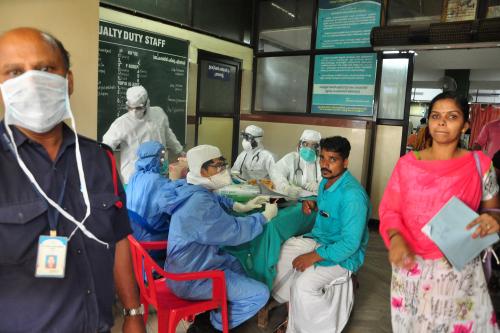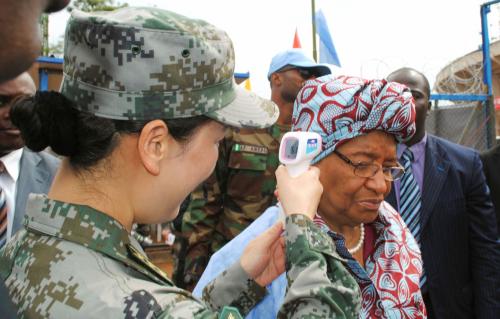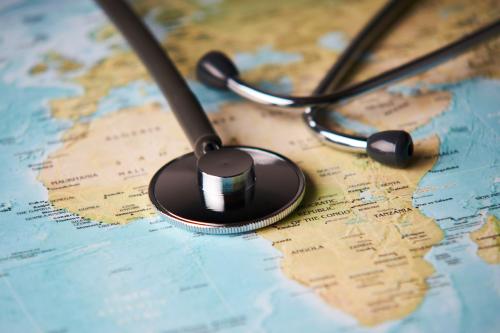Solving international collective action problems—like tackling pandemics, developing new technologies to control neglected diseases, or strengthening the governance and stewardship of global health systems—is essential for achieving the health-related Sustainable Development Goals (SDGs). Yet only about one-fifth of all donor financing for health is directed toward solving these types of supranational health challenges. The 2014-2016 Ebola epidemic in West Africa showed the consequences of donors neglecting such challenges: there was no Ebola vaccine, treatment or rapid diagnostic test; surveillance systems were weak; and the World Health Organization (WHO) was criticized for its slow response and lack of leadership.
Renewed attention to GPGs for health
Ebola and other recent outbreaks like Nipah in India or Zika in Latin America have renewed attention to financing and delivering “global public goods for health” (GPGs for health) as a mechanism to solve supranational health challenges. To give a few examples:
- The new Coalition on Epidemic Preparedness Innovations was launched at the World Economic Forum in Davos, Switzerland in January 2017; the coalition is funding the development of vaccines against infections with epidemic or pandemic potential.
- One of the three strategic shifts in the WHO’s draft 13th General Programme of Work for 2019-2023 is “focusing global public goods on impact.” The WHO’s Department of Health Systems Governance and Financing has also launched a knowledge program on “Financing Common Goods in Health” (one of us, Gavin, is a member of the program’s technical advisory group and is co-authoring a chapter for a WHO publication).
- The World Bank recently announced a small but significant $100 million window for global public goods that will come from the net income or profit on the World Bank’s lending activities.
Alongside these new activities, there has been growing attention to research on GPGs for health, including research on establishing priorities and estimating financing flows and needs. Our own center at Duke University, the Center for Policy Impact in Global Health, has been engaged in this research through a number of collaborative projects with partners such as SEEK Development, UCSF’s Evidence to Policy Initiative, Open Consultants, and Spark Street Consulting. We’ve co-authored an economic policy paper on the financing gap for pandemic preparedness for last year’s G-20 global health working group, we just published a study that estimated financing needs for neglected disease product development, and we have just released a policy paper outlining key opportunities for major multilaterals to intensify cooperation to deliver on GPGs for health.
Defining GPGs for health
But one challenge surrounding the agenda on GPGs for health—understanding, supporting, and researching it—is the variance in terminology and the lack of a common definition.
The conventional definition is based on the purely economic framing of a public good. Using this definition, a GPG for health is “non-rival” (if one person consumes it, this does not reduce its availability to others) and “non-excludable” (no one can be denied access).
Yet if we return to the example of Ebola, this narrow definition seems inadequate to capture the broad array of international collective actions needed to address supranational health challenges. It captures only a subset of “traditional” GPGs: the generation and sharing of health-related knowledge, the publication of research in open access journals, the setting of international health norms and standards, or the sharing of intellectual property (as in the Medicines Patent Pool).
A wider view of GPGs was provided in a recent report, “Multilateral Development Banking for this Century’s Development Challenges,” which summarized the recommendations of a commission co-chaired by Montek Singh Ahluwalia, Lawrence Summers, and Andrés Velasco. “An explicit new mandate for the World Bank should promote global public goods critical to development as its major priority,” argued the report. And it gave examples of GPGs that went beyond the traditional economic view, such as antimicrobial resistance and climate mitigation.
The concept of “common goods in health” used by the WHO’s Department of Health Systems Governance and Financing also acknowledges a broader array of activities. This concept refers to health services or activities that are either strictly public goods or are likely to face market failures due to sizeable externalities.
An alternative framing: Global functions
In our own research, we use the broad term “global functions” that was originally proposed by the Lancet Commission on Investing in Health (the CIH) as a way of capturing the full set of activities that can be considered as international collective action for health (ICAH). The CIH noted that the term global (or “core”) functions helps to distinguish ICAH from country-specific health sector support, i.e., donor support to individual countries to tackle time-limited problems that arise from constrained national capacity. The CIH classified global functions into three types:
- Traditional GPGs for health, as described above.
- Managing negative cross-border externalities—such as controlling epidemics and pandemics, tackling antimicrobial resistance, or curbing the spread of risk factors for non-communicable diseases, such as smoking, alcohol, and sugar-sweetened beverages.
- Fostering global leadership or stewardship—such as global convening to develop consensus and global policies, or cross-sectoral advocacy (trade, education, etc.) to improve health.
We have completed several studies that have used this framework, such as our study on the proportion of donor financing for health directed at global functions and an analysis of Sweden’s health aid portfolio.
Getting to a common definition
While we have found the global functions framework to be valuable to clarify, define, and classify ICAH activities, only an energetic and high profile consensus-building exercise will lead to a widely adopted definition of GPGs for health. This consensus is important not just for policy research, but also for tracking donor support for GPGs for health. A common understanding has become an important priority, given that the OECD is considering adopting a new measure of financing flows that support the SDGs, a measure that would include funding for GPGs. The measure, which is provisionally being called total official support for sustainable development (TOSSD), aims to capture the broad array of finance for the SDGs: bilateral and multilateral official development assistance (ODA), South-South finance, private sector investments, and support for GPGs.
So it has never been more important to answer the question: What exactly do we mean by GPGs for health?






Commentary
We need a consensus on the definition of ‘global public goods for health’
November 20, 2018